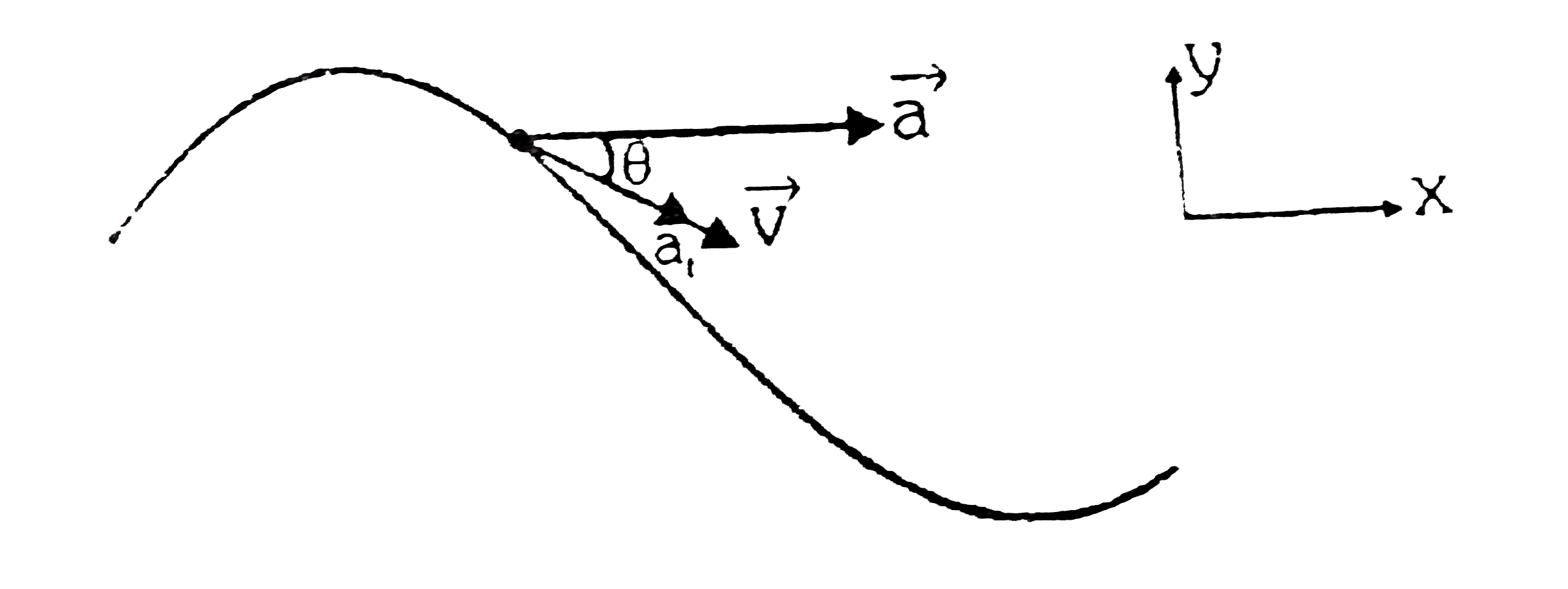Two particles of equal mass have velocities →v1=2ˆi=m/s−1 and →v2=2ˆjm/s−1. First particle has an acceleration →a1=(3ˆi+3ˆj)ms−2 while the acceleration of the other particle is zero. The centre of mass of the two particles moves in a path of.
circle
parabola
ellipse
straight line
The correct Answer is:D
Step by step video, text & image solution for Two particles of equal mass have velocities vec v_1 = 2 hat i= m//s^-1 and vec v_2 = 2hat j m//s^-1. First particle has an acceleration vec a_1= (3 hat i+ 3 hat j) ms^-2 while the acceleration of the other particle is zero. The centre of mass of the two particles moves in a path of. by Physics experts to help you in doubts & scoring excellent marks in Class 11 exams.
Updated on:21/07/2023Topper's Solved these Questions
- FORCE Book:TARGET PUBLICATIONChapter:FORCE Exercise:Evaluation Test
Explore 16 Videos
- FORCE Book:TARGET PUBLICATIONChapter:FORCE Exercise:Competitive Theinking (4.10 Conditions of equilibrium of a rigid body)
Explore 1 Video
- ELECTRONS AND PHOTONSBook:TARGET PUBLICATIONChapter:ELECTRONS AND PHOTONSExercise:Evaluation Test
Explore 19 Videos
- FRICTION IS SOLIDS AND LIQUIDS Book:TARGET PUBLICATIONChapter:FRICTION IS SOLIDS AND LIQUIDS Exercise:MCQ (EVALUATION TEST)
Explore 21 Videos
Similar Questions
Knowledge Check
Two particles of equal masses have velocities →v1=8ˆi and →v2=8ˆj. First particle has an acceleration →a1=(5ˆi+5ˆj)ms−2 while the acceleration of the other particle is zero. The centre of mass of the two particles moves is a path of
Astraight lineBparabolaCcircleDellipseTwo particles of equal masses have velocities →v1=4ˆi and →v2=4ˆj. First particle has an acceleration →a1=(5ˆi+5ˆj)ms−2 while the acceleration of the other particle is zero. The centre of mass of the two particles moves in a path of
Astraight lineBparabolaCcircleDellipseTwo particles of equal masses have velocities →v1=4ˆiand→v2=4ˆj . First particle hac an acceleration of the other particle is zero . The centre of mass of the two particles moves in a path of
AStraight lineBParabolaCCircleDEllipse
A particle moves with a tangential acceleration at=→a.ˆv where →a=(5ˆi)m/s2. If the speed of the particle is zero at x=0, then find v (in m/s) at x=4.9m.

View SolutionA particle of mass 2√5Kg is having velocity →v=(2ˆi+ˆj)ms" and acceleration →a=(ˆj−ˆi)ms2" at some instant of time. At same instant find component of net force (in N) parallel to velocity.
View SolutionVelocity of a particle is v=(2ˆi+3ˆj−4ˆk)m/s and its acceleration is zero. State whether it is 1-D, 2-D or 3-D motion?
View SolutionThe velocities of two particles AandB of same mass are →VA=aˆi and →VB=bˆj where a and b are constants. The acceleration of particle A is (2aˆi+4bˆj) and acceleration of particle B is (aˆi−4bˆj) in (m/s2). The centre of mass of two particle will move in :
View SolutionA particle has initial velocity (3ˆi+4ˆj) and has acceleration (0.1ˆi+0.3ˆj). Its speed after 10s is.
View Solution